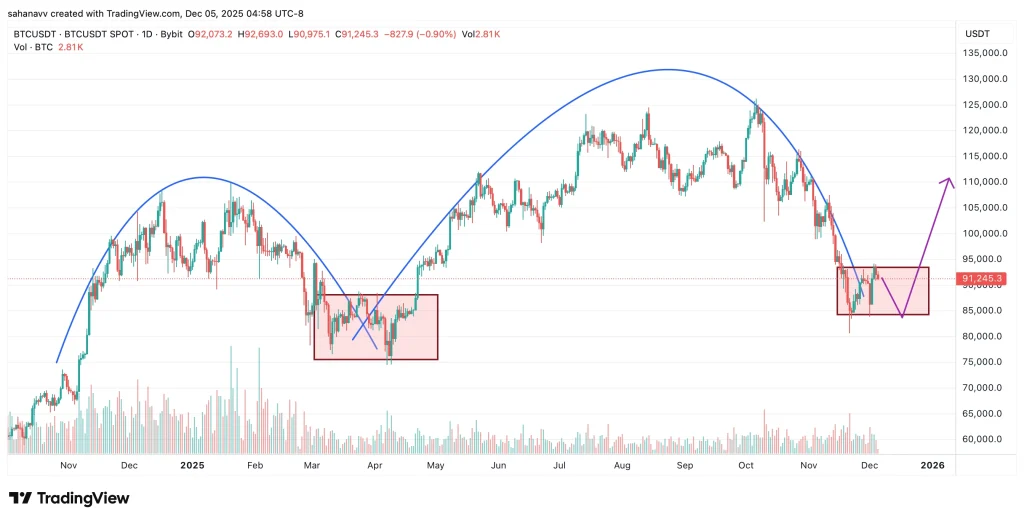The last mile of blockchain, the first mile of Megaeth: Taking over global assets
1. The blockchain project Megaeth has recently reached a critical milestone with its public sale, marking the official start of the project. Its goal is to build the world's fastest public chain to solve the "last mile" problem of blockchain's management of global assets. 2. Industry observations indicate that the crypto punk spirit has been weakening year by year, and the industry's focus is shifting towards high-performance infrastructure. Against this backdrop, Megaeth is advancing the implementation of its project, emphasizing that the blockchain industry has moved past the early exploratory phase, and high performance has become key to supporting the next stage of application scenarios. 3. Industry insiders believe that all infrastructure has a "late-mover advantage," and blockchain also needs to go through a process of performance upgrades to drive scenario expansion. High performance is seen as the key to unlocking larger-scale applications. 4. With multiple chains exploring performance pathways, Megaeth positions itself as aiming to be the "fastest public chain," attempting to solve the challenge of "trillions of transactions on-chain." The team believes that addressing real-world problems is the most effective path, regardless of whether it is Layer1 or Layer2. 5. Megaeth's public sale is seen as the beginning of its "first mile" journey. Although it may face technical challenges, the potential brought by its differentiated underlying architecture is highly regarded and is expected to give rise to new industry paradigms.
Original source: @0xAlexon
I haven't written anything for a few months, so I'm contributing a piece on the day Megaeth is about to have its public sale. The concentration of crypto punks has visibly declined over the past year. It's hard to imagine that most Google Meetings are now about how to gain support from the White House and the Trump family. Unlike most complaining literary youths, we found a new spark and are building it.
It's not hard to understand that before reaching physical limits, any infrastructure has the advantage of being a latecomer. This is common in the development of mobile internet. We had the latecomer advantage of 4G and 5G networks (when the cost of basic infrastructure hasn't been recouped, deploying a complete 5G network in the US has a very low ROI), which allowed Chinese mobile internet apps to innovate with paradigms superior to those of the US.
Is this due to innovation? That's part of it, but more importantly, the underlying architecture changed, performance improved, and the boundaries for applications to explore expanded.
To put it more simply, the increase in network speed allowed us to evolve from using landline phones to mobile phones, then to texting and real-time communication with loved ones, and later to sending all kinds of multimedia, emojis, and voice messages via Whatsapp and Wechat.
This is very similar to the development of blockchain. After a long journey, many excellent forms have emerged. AMM is a genius design, greatly solving the problem of how to trade when performance is insufficient, and the cold start issue when there are few on-chain users. I want to specifically point out that I don't think AMM is an outdated trading model; its composability is excellent, and in some cases, it can even be smoother than order books in terms of liquidation.
But this is not the endgame. In high-performance scenarios, we've seen the rise of on-chain order books, which is exactly what a certain now-imprisoned, wild-haired individual wanted to do. By the way, in my thoughts on high performance over the past few months, I found that he had considered all of them. The more I think about it, the more I feel that extreme wisdom can be harmful.
If discussing high-performance scenarios feels too abstract, let's put it more plainly: Memecoin is actually the first high-performance trading scenario. Is Pumpfun's profit really from a large number of retail investors?
Not really. It's from those blockchain-native "HFTs" doing MEV on-chain.
In the past, all the demands for high concurrency and high speed were met by CEXs, and the HFT arms race focused on dedicated network lines and how to maintain Binance's VIP9 status. For the first time, in memecoin trading, everyone started competing on hardware.
I admit that memecoin is a special cultural financial product. In the past, cultural financial products always relied on a physical item, like Labubu, to be priced and monetized.
But what is the revelation that Memecoin brings us? Is it endless PVP? No, it's that people have already started using high-speed blockchain scenarios.
Try to recall: after buying memecoins on Gmgn and Axiom, would you still go back to trading memecoins on Ethereum mainnet? I love Ethereum, but it's really not suitable for high-speed trading.
So, as practitioners, what we need to think about is: what is the next high-speed trading scenario?
Stocks? Commodities? Forex?
Whoever can support the next batch of high-speed on-chain trading scenarios may shine. If blockchain has a "last mile," then taking over global assets is that last mile.
It can be in the form of TVL, with enough money placed in a sufficiently secure place; or in the form of turnover rate, with enough money circulating at high frequency.
This is not a cult, this is science.
- Solana has made many optimizations to reduce latency for ICM, such as Doublezero. I really like Doublezero, even though its token performance is very poor. How to make a good token is not within the scope of our discussion today.
- The issue I complained about with BNBChain in the first half of the year (link attached) was powerfully resolved by CZ with an administrative order after his return, making this month's BNBChain Memecoin season possible at the infrastructure level. Perhaps the exploration of high-performance chains is left to Aster as a political task.
- Hyperliquid has also started to follow Binance's path, using the advantages of centralization to bring traffic to its ecosystem. I actually respect Hyperliquid a lot, because if you look at it from an entrepreneurial perspective two years ago, Hyperliquid's not-so-decentralized solution was basically the only path.
Without exception, all successful examples in this cycle have chosen to sacrifice decentralization for extreme performance, but there must be a bottom line: it still has to be a blockchain. Of course, I fully understand, because building a high-performance chain is significantly more difficult than building an application.
But architecture determines the ceiling, and as I said at the beginning, the latecomer advantage on high-performance chains means that even with more money and resources, it still requires massive engineering time. Megaeth's path of sacrificing decentralization for performance is almost the only solution under the premise of retaining blockchain characteristics. If you're interested in a popular science explanation, you can check the link below:
I've met a few friends who talked to me about the debate between L1 and L2, which is meaningless. The real issue is: when high-performance trading scenarios need to go on-chain, how can we enable trillions in trading volume to happen at high frequency on-chain? Whether it's L1 or L2 is irrelevant to solving this practical problem.
It reminds me of a quote from an outstanding Chinese politician: "It doesn't matter if a cat is black or white; as long as it catches mice, it's a good cat."
I asked yilong and lei what Megaeth's North Star is, and they've always told me: how to build the fastest chain in the world and find every way to achieve it. Note, the focus is: the fastest.
Let's throw out a few questions:
- The global forex trading market sees trillions of dollars in daily volume. How much of this will be on-chain in the future?
- How can we ensure that Wall Street trading institutions can quickly deploy strategies on-chain without understanding blockchain?
- Why can't gas be designed with separate accounts for institutions and retail users?
These are all issues that must be faced and solved.
Megaeth's birth will certainly encounter various problems, even outages, just like other giants did at their inception. But with a different foundational architecture, the species that grows up will also be different. Let's see what new species will emerge in this time window won by technology.
Sometimes people don't realize that such an ordinary day is just that day.
On this day, Megaeth began the first kilometer of its journey: taking over global assets.
Original link:
Disclaimer: The content of this article solely reflects the author's opinion and does not represent the platform in any capacity. This article is not intended to serve as a reference for making investment decisions.
You may also like
“Ethereum Price Could Surge Toward $62,000 in Long-Term Outlook.” Tom Lee Says
XRP ETF Inflows Near $1 Billion Faster Than Bitcoin and Ethereum ETFs
Bitcoin (BTC) Price Enters a Decisive Phase: Is a Major Breakout On the Horizon?

Tether Theory: The Architecture of Monetary Sovereignty and Private Dollarization
A privately-owned company based in the British Virgin Islands, with a very small number of employees, has built a monetary system on a scale comparable to that of a central bank, with profitability even surpassing that of central banks.

